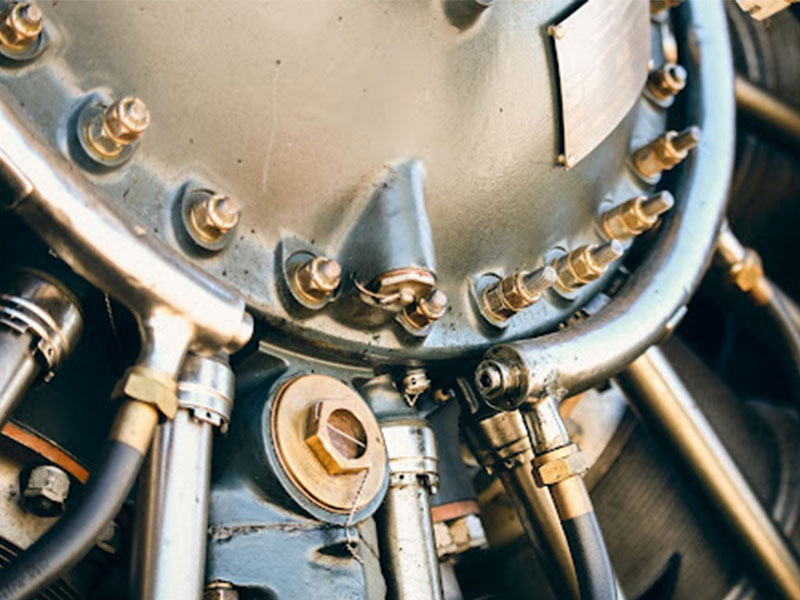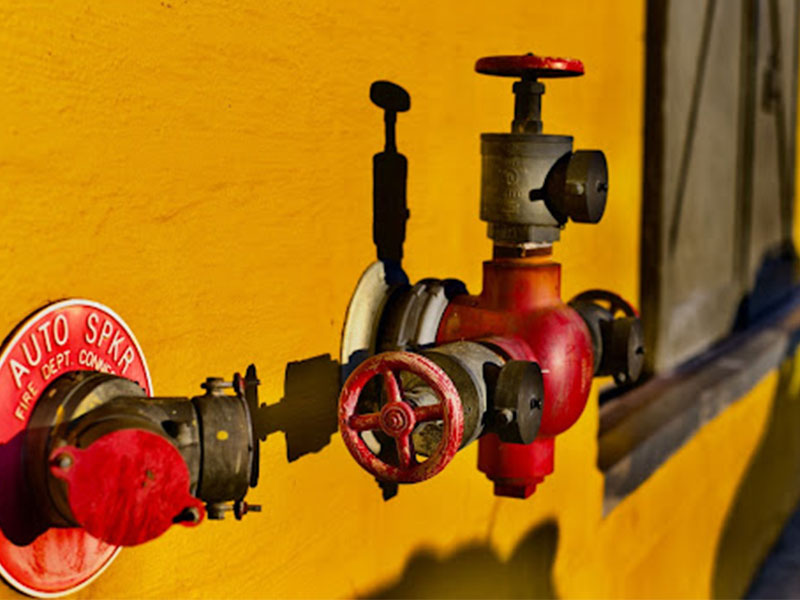Source: UNSPLASH
In oil and gas production pipelines, it is crucial to fit strainers that enable the filtration of impurities such as solids from passing through the piping system. Strainers ensure that the end product is pure and without any debris. In addition to removing dirt, strainers also prevent the long-term damage of other parts of the piping system such as valves, pumps, and nozzles. There are various types of strainers that work in different ways to protect your oil and gas pipeline. In this blog, we are going to discuss the different types of strainers and how they function.
How Strainers Work in Oil and Gas Pipelines

Source: UNSPLASH
Before we dive into the different types of strainers, let us start by doing an in-depth analysis of how strainers work. They work as a filtration system that separates the dirt from the end product. Strainers also remove other unwanted elements from entering the system. Oil and gas are very crucial components that we use in our day-to-day lives and if they contain any harmful elements then there is a risk of serious health complications arising.
For instance, oxygen that is used in oxygen tanks in hospitals for covid-19 patients has to be pure and safe for use. It is easy to confuse an oil strainer and an oil filter. An oil and gas strainer is usually made up out of materials that are resistant to corrosion such as copper and aluminum. Oil and gas strainers are designed to remove large impurities, 40 microns, and more.
The size of the mesh for strainers determines the size of the contaminants, for instance, a 60 mesh strainer will catch around 240 microns specks. An oil and gas filter on the other hand removes very tiny impurities that cannot be seen by the naked eye. With this in mind, let us have a look at the different types of strainers and how they work.
Types of Strainers in Oil and Gas Pipelines

Source: UNSPLASH
There are different stainers that work towards the same goal, removing impurities from oil and gas. They mostly differ in size, shape and the materials they are made from. Other oil and gas strainer manufacturers provide custom-made strainers that are tailor-made to serve specific purposes. So you do not have to settle for what is in the market if it is not up to your standards. The most common strainers in oil and gas production pipelines include;
Y Strainers
They are commonly referred to as Y strainers because of their y shape. The Y strainer is the most common oil and gas strainer that is used in most piping systems. They are designed for temporary use and should be cleaned when the pressure drops to around 6 psi differential. There are different ways in which you can measure the pressure drop in an oil and gas strainer.
The Y strainer is usually composed of iron and steel. The sieve, which is the filtration medium, is made up of stainless steel. This oil and gas strainer is mostly used in instances where the constituent being filtered has a low concentration of contaminants. They are cost-friendly and do not need to be cleaned as often as other types of oil and gas strainers.
T Strainers
This oil and gas strainer is also referred to as the bathtub strainer. It is a compound strainer that is used to filter contaminants from oil and gas pipelines. A T strainer is commonly used in large bore lines and is equipped with various filtration systems to ensure the utmost performance of the oil and gas strainer.
Just like Y strainers, the T strainer is also cost-friendly and is a good option if you have a system that requires a lot of filtration work but you do not want to spend so much money on an oil and gas strainer. The T strainer is made with pipes and plates and the filtration medium, the mesh, is made up of stainless steel. It is easy to install and does not require constant maintenance.
The screen of the T strainer can be accessed easily for cleaning in case of pressure drops. When installed in a horizontal position, this oil and gas strainer allows for the opening of the chamber valve while the system is running without spilling the fluid. This makes it a perfect choice for filtering high-velocity fluids.
Basket Strainer
A basket strainer can either be installed as a single strainer or a series of strainers. This oil and gas strainer is used in high flow velocities and can handle large particles as opposed to other strainers. It is important to determine the size of the mesh of a basket strainer beforehand. A mesh with tiny openings will result in constant clogging of the strainer.
On the other hand, a mesh with very big openings will allow impurities to pass through the oil and gas strainer. Basket strainers are made of iron and stainless steel. The most significant advantage of using a basket strainer is that it can be used continuously without constant maintenance procedures.
You can also place a pressure gauge to alert you whenever your strainer is almost getting clogged up. Ensure that you conduct regular cleanings to increase the lifespan of your oil and gas strainer. There are two major types of basket strainers in the market which include;
Simplex Strainer
This oil and gas strainer is considered a basket strainer and is used for long-term purposes. A simplex strainer is made up of iron while the mesh is made up of stainless steel. It is also equipped with different filtration sections to ensure that the end product is in its purest form. This oil and gas strainer is easy to open and therefore easy to maintain.
The simplex strainer also has a large capacity of holding particles hence does not require constant cleaning due to pressure drops. This saves time and money that is used for maintenance of the oil and gas strainer. However, when this strainer gets clogged up, the system has to be shut and the basket replaced before the process can continue.
Duplex Strainer
Just like the simplex strainers, a duplex oil and gas strainer is also a basket-type strainer that has two strainer baskets instead of just one. It is also made up of iron and stainless steel. They are easy to maintain due to their easy-to-open design. You can actually clean one basket strainer while the other is in full function by simply diverting the flow of liquid between the two strainers. This can be done by the use of the directional valve handle that is between the two baskets.
As opposed to the simplex strainer, this oil and gas strainer does not have to be shut down for cleaning purposes. With a duplex strainer, you can be assured of constant uptime in the system hence saving more time. The duplex strainer also has a high holding capacity for particles hence does not require constant maintenance.
How to Install an Oil and Gas Strainer
First off, ensure that you thoroughly inspect your oil and gas strainer during your purchase. Make sure that there are no damages to your Y strainer before you buy it. Check the cover for any dirt that may be trapped and ensure that the surface of the oil and gas strainer is clean. Before you begin your installation process, ensure that the oil and gas pipeline aligns properly with the strainer. Do not use your strainer to align a pipe.
An oil and gas strainer should be placed at the front part of the pump so it can trap the impurities at the beginning of the system. It should also be located where you can easily remove the drain plug to make it easy to clean the oil and gas strainer. Ensure that you support the pipeline before installing your strainer. A strainer comes with an arrow sign that should point in the direction of the flow in the pipe.
Once your oil and gas strainer is ready for use, start your system gradually to avoid causing sudden shock to the strainer. Start by opening the plug valve to remove all the air from the strainer. When all the air is out, close the valve and allow the process to start. This gradual start will ensure that no damage is caused to the strainer and other components of the piping system.
Maintenance Tips for Oil and Gas Strainers
Just like any other type of machinery, and oil and gas strainer requires maintenance every now and then to avoid damaging it. As discussed above, some strainers require more maintenance than others. You might want to consider investing in low-maintenance oil and gas strainers if you can. You can also prevent constant maintenance procedures by taking good care of your strainer. Some of the ways you can do this include;
Regular Cleaning: Do not wait for your strainer to get completely clogged up before you open it up for cleaning. You can set timelines for cleaning the oil and gas strainer to ensure that it is functioning well at all times. Over clogging of the strainer can cause serious damage at times and you might end up replacing the whole thing.
Install Pressure Gauge: A pressure gauge will alert you before your oil and gas strainer gets clogged up. This will enable you to take necessary action before things get out of hand. The pressure gauge works by detecting any pressure build-ups in your system which is the major indication of possible clogging.
Invest in a Quality Strainer: Before purchasing an oil and gas strainer, ensure that you conduct thorough research on the different manufacturers in the market. A good quality strainer will function effectively without having to be serviced every now and then.
Benefits of Using a Strainer in the Oil and Gas Industry
Most people filter their water before using it, why? To avoid consuming harmful germs that might cause serious health complications. The same applies to oil and gas. It is important to ensure that whatever gets to your consumers is safe and does not contain any dangerous elements. Some of the major benefits of an oil and gas strainer include;
To reduce system maintenance costs.
To provide the consumer with the clean and safe end product
To lower the damage to the piping system
To protect valves and pumps from damage, hence saving costs on repairs or replacements.
The Bottom Line
Strainers are an essential part of the production process in the oil and gas industry. However, one might have a hard time choosing the best oil and gas strainer for their operation. In that case, do not hesitate to seek guidance from your supplier so you can get clarification. If you need more information on oil and gas strainers, check out our website.

